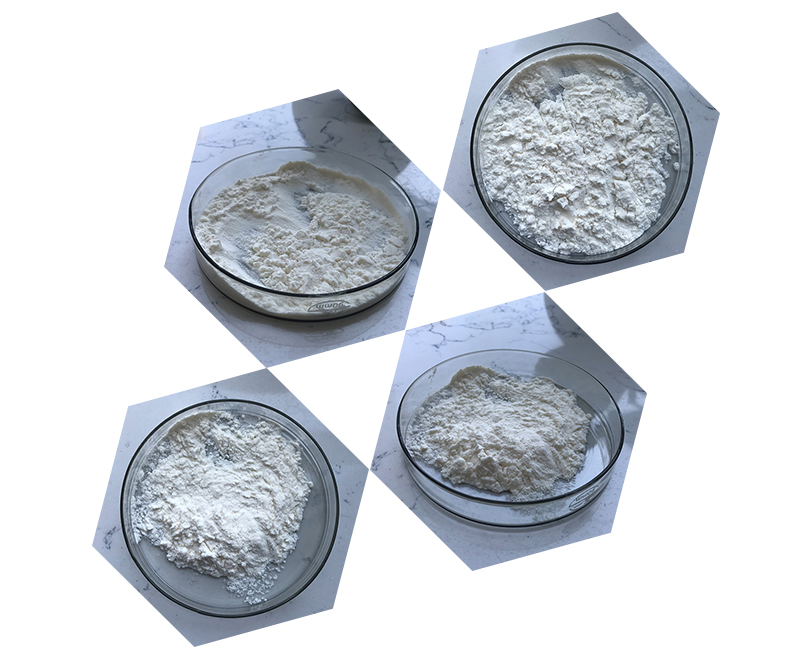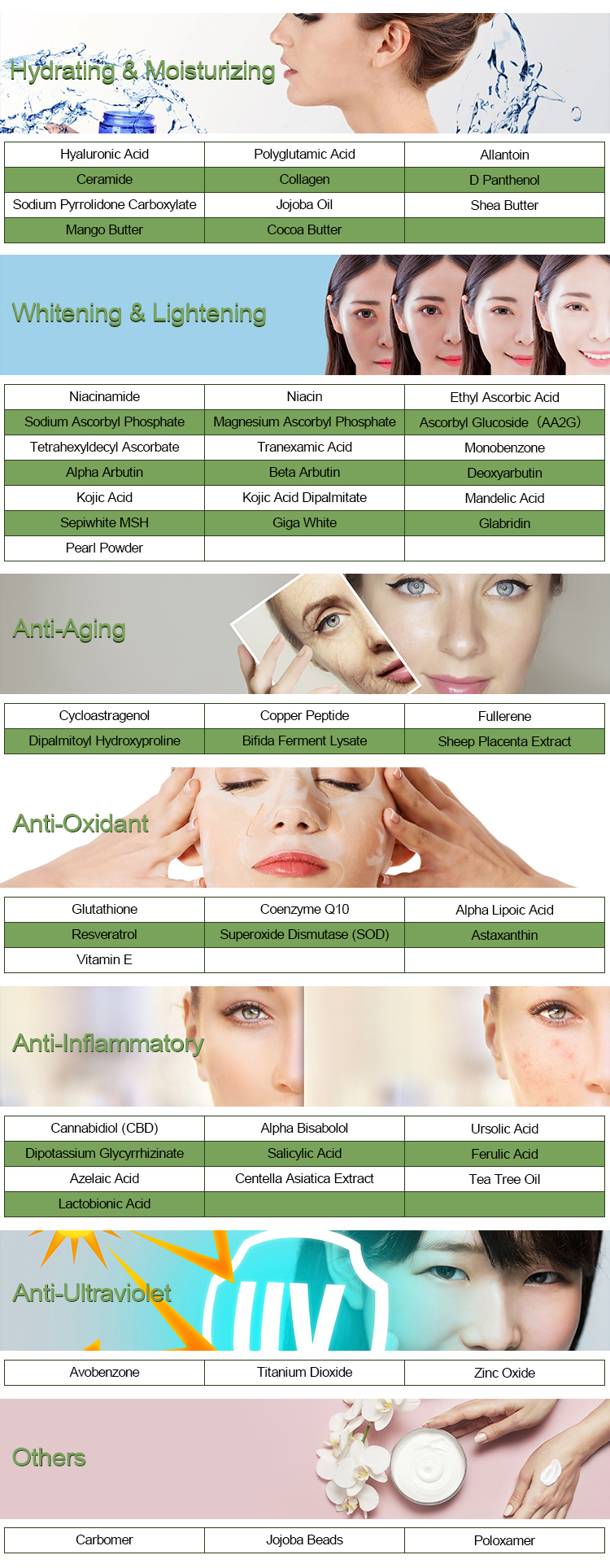Magnesium Ascorbyl Phosphate (MAP)
Magnesium Ascorbyl Phosphate (MAP) is a water-soluble derivative of Vitamin C (ascorbic acid). It is commonly used in skincare and cosmetic formulations due to its stability and skin benefits compared to pure Vitamin C, which is more prone to oxidation.
Chemical Composition:
- A derivative of Vitamin C (ascorbic acid).
- Chemical formula: C6H7MgO9P.
Characteristics:
- Water-soluble and stable at neutral pH.
- Magnesium salt of ascorbic acid phosphorylated at the 2nd carbon position.
- Often found as a fine white to off-white powder.

Key Properties of Magnesium Ascorbyl Phosphate:
1.Antioxidant:
- Protects skin from free radical damage caused by UV exposure.
- Neutralizes reactive oxygen species (ROS) in skin cells.
2.Skin Brightening:
- Inhibits melanin production by suppressing tyrosinase activity.
- Helps reduce hyperpigmentation and evens skin tone.
3.Collagen Synthesis:
- Stimulates collagen production, improving skin elasticity and reducing the appearance of fine lines.
4.Hydrating:
- Helps maintain skin hydration by reducing transepidermal water loss.
5.Non-Irritating:
- Gentler than pure ascorbic acid, suitable for sensitive skin.

Applications of Magnesium Ascorbyl Phosphate:
- Found in skincare products like serums, creams, and lotions.
- Concentrations in formulations typically range from 3% to 10%.
Stability:
- More stable than pure Vitamin C (ascorbic acid), making it easier to formulate.
- Stable in aqueous solutions with neutral to slightly acidic pH (5–7).
Benefits of Magnesium Ascorbyl Phosphate:
- Improves skin tone and texture.
- Reduces signs of aging, such as wrinkles and dark spots.
- Provides photoprotection when combined with sunscreens.
Limitations:
- Converts to ascorbic acid in the skin, so its efficacy depends on the rate of conversion.
- Generally less potent than pure ascorbic acid but more stable.

Common Uses:
- Brightening skincare routines.
- Anti-aging treatments.
- Products for sensitive or acne-prone skin.
Would you like further details on its formulation, usage, or mechanism?
